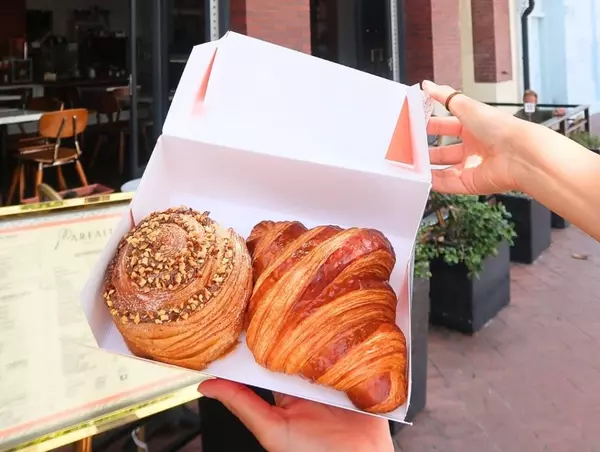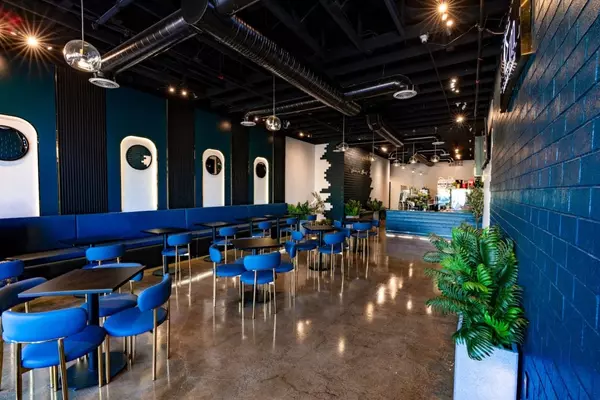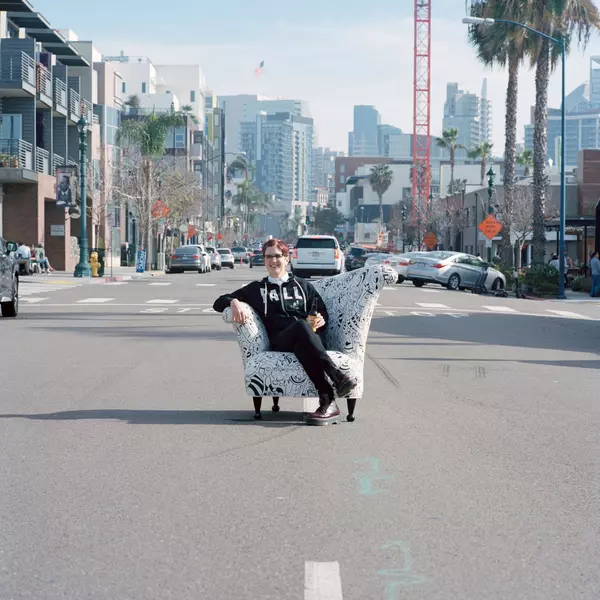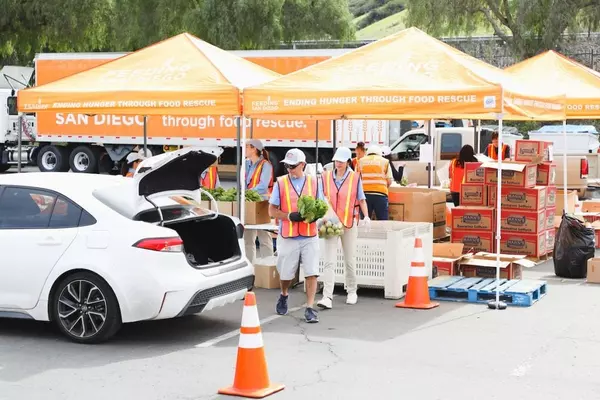‘Loophole’ in state law opens door to 22-story high-rise in Pacific Beach
A Los Angeles developer is seeking to erect a 22-story high-rise with a combination of hotel rooms and apartments above ground-floor shops blocks from the coast in Pacific Beach, flouting a voter-enacted law that has long kept building heights at 30 feet or less in the beach community.
Last month, real estate investment and development firm Kalonymus LLC filed a building permit application with the city of San Diego’s development services department to build a 239-foot-tall, mixed-use tower at 970 Turquoise St. The project calls for 213 total units — including 10 residential units reserved for very-low and middle-income families — and 311 parking spaces on the 0.67-acre site.
The $185 million project, which is currently being reviewed internally by the department, is invoking a state law — State Density Bonus Law — to bypass the neighborhood height limit and coast through the permitting process.
The developer maintains that it is applying state and local laws as intended to create housing, but the project is facing opposition from the mayor, the council member who represents the area and the community.
“We want to make this beach community accessible to a lot more San Diegans who otherwise wouldn’t have the ability to live here,” Matt Awbrey, a spokesperson for Kalonymus, told the Union-Tribune. “We’re talking about making hundreds of units available in a desirable community where the barrier to entry has historically been very high.”
In addition, the project requires no subsidies, he said.
City leaders and community members contend the developer is improperly exploiting the state’s good intentions.
“Pro-housing cities such as San Diego have gone above and beyond to address the affordable housing crisis. We have long been advocates for creating more affordable homes for San Diegans of all incomes; however, this project does not align with state or city policies intended to build more affordable homes,” San Diego Mayor Todd Gloria and Councilmember Joe LaCava wrote Tuesday in a letter to the Pacific Beach Planning Group. “We must not allow pro-housing policies to be usurped for purposes that do not meet a public benefit or respond to the state’s affordability crisis.”
The local officials said they will work with state legislators to fix what they characterize in the letter as a “loophole” in state law. However, the leaders did not promise to block the project. They appear to have no power to do so. The project is believed to be ministerial, which means there are no discretionary actions for a municipal body to approve or deny.
The mayor and LaCava have asked California’s Department of Housing and Community Development to weigh in. The agency previously determined that the state law supersedes local voter initiatives.
The developer believes it is on solid ground.
“This project is made possible largely through new state laws that encourage home building on a scale that acknowledges California’s housing crisis,” Awbrey said. “The project team has been working with experts for quite some time to craft a building that complies with all applicable housing laws.”
San Diego’s coastal zone, officially known as the Coastal Height Limit Overlay Zone, was established by a 1972 voter initiative, Proposition D. The local law prevents buildings over 30 feet west of Interstate 5, with carve-outs for downtown, National City and parts of Mission Bay. The entirety of the Midway-Pacific Highway Community Plan area no longer falls within the protected zone thanks to a 2022 voter-approved ballot measure that survived legal challenges.
The local coastal law is distinct from the California Coastal Act of 1976, which protects at the state level land up and down the coast of California. The Turquoise project, which takes up the four parcels between 954 and 980 Turquoise St., falls within the city’s coastal zone but just outside the state’s more narrow boundaries.
The Pacific Beach parcels on Turquoise are zoned CC-4-2, which is a mixed-use zone that supports high-density commercial uses and and some housing. The zone allows for 31 residential units on the 29,134-square-foot site, according to information provided by a city spokesperson. Kalonymus is relying on two density bonuses from the state and two density bonuses from the city to boost the number to 74 residential units.
The State Density Bonus Law, established in 1979 and expanded over the years, exists as an incentive for developers to build income-restricted units. Under the law, housing developments that deed-restrict a percentage of residential units for very-low, low- or middle-income families are eligible for both density bonuses and waivers to bypass local regulations like zone-based height restrictions.
The Turquoise project is setting aside 15 percent of the 31 residential units allowed under the base zone, or five units, for very-low-income households. The developers are also setting aside 15 percent of residential units, or five units, for moderate-income households.
The developer is entitled by the law to build 50 percent more units, or 16 additional market-rate units, because of the very-low-income units.
Assembly Bill 1287, authored by Assemblymember David Alvarez, D-San Diego, went into effect this year and amended the state law to grant developers an additional density bonus. As such, Kalonymus gets a second 50 percent bonus for its middle-income units, adding another 16 market-rate units to the project.
The developer is also entitled to build an additional 11 residential units by using local density bonuses for including three-bedroom units.
The Turquoise project also calls for 139 hotel rooms, which are allowed in part because of the property’s commercial zoning. Kalonymus is also requesting a Floor Area Ratio, or FAR, incentive to maximize the commercial density on the site. FAR is the ratio of a building’s gross floor area to the size of the land. The lot area multiplied by the FAR determines the buildable square footage.
The units will be permitted as hotel rooms, technically known as visitor accommodations, but the developer intends to rent them as market-rate apartments.
The city’s municipal code allowed the long-term rental of visitor accommodations under the version that was effective at the time the developer’s permit application was submitted, the developer said. The regulations were changed in the most recent development code update, which went into effect this month, to specify that visitor accommodation lodging, other than single-room occupancy units, can be no longer be used for stays of more than 30 days.
“Under the city’s zoning regulations at the time the project was submitted and vested under local and state law, visitor accommodation uses permitted longer-term stays of more than 30 days,” Awbrey, the developer’s spokesperson, said. “The visitor accommodation units will be designed with amenities like kitchens and the developer intends to operate them on long-term leases in compliance with the regulations applicable to the project.”
The project, which will tower more than 200 feet over its neighbors, is offensive to some community members.
“It’s a big middle finger to the neighborhood,” said Marcella Bothwell, chair of the Pacific Beach Planning Group and a retired ear, nose and throat surgeon. “The thing that’s appalling about this is that they tricked the law by using something that was meant for affordable housing, and they used it for commercial development, for pure profit.”
A group called SavePB is hosting a rally Wednesday evening ahead of the regularly scheduled community planning group meeting. Bothwell will also discuss the project at Wednesday’s meeting. The developer is not participating. Bothwell primarily wants to update community members on what’s happening, even though she knows there’s little that can be done.
“We may end up with this monstrosity,” she said.
Transit and housing advocacy group Circulate San Diego is pleased with the application of the state law.
“The Turquoise project is one of the first in San Diego to utilize AB 1287, and as the principal sponsor of this bill, we’re excited to see it supporting the construction of both affordable and middle-income homes,” said Jeremy Bloom, an executive with Circulate San Diego. “It’s promising to see this legislative tool being used as intended to help address our region’s housing affordability challenges.”
Kalonymus is a little-known entity and is described on its website as a boutique firm that specializes in multifamily, mixed-use and opportunistic investments. The project architect is Carrier Johnson + Culture.
Kalonymus acquired the 970 Turquoise site, home to a fitness studio, for $2.1 million in February 2023, property records show. The developer is under contract to purchase the three additional parcels at 954 Turquoise St., 960 Turquoise St. and 980 Turquoise St. The properties include a shuttered bar, the French Gourmet restaurant and bakery, and a liquor store.
The timeline for the Turquoise project is unclear, although presumably the developer can start construction once the building permit is issued. The permit processing time is expected to take around a year.
The project is the second to invoke the state housing law to bust the 30-foot height limit in San Diego’s coastal zone. The Rose Creek Village project, which recently received loans from the city and county, will create a 60-foot-tall building with 59 income-restricted units on a small lot at 2662 Garnet Ave. in Pacific Beach.
Categories
Recent Posts










GET MORE INFORMATION


